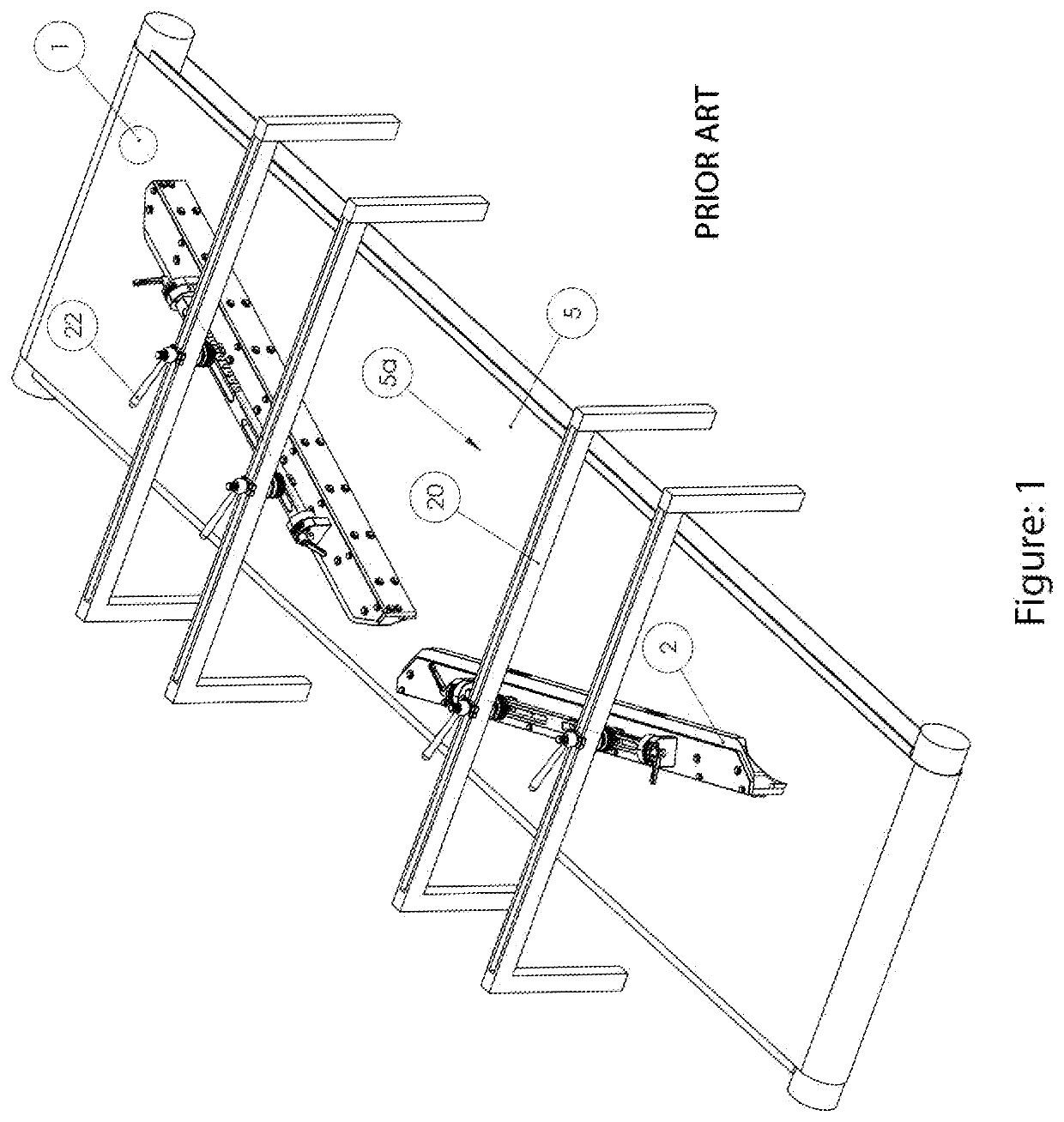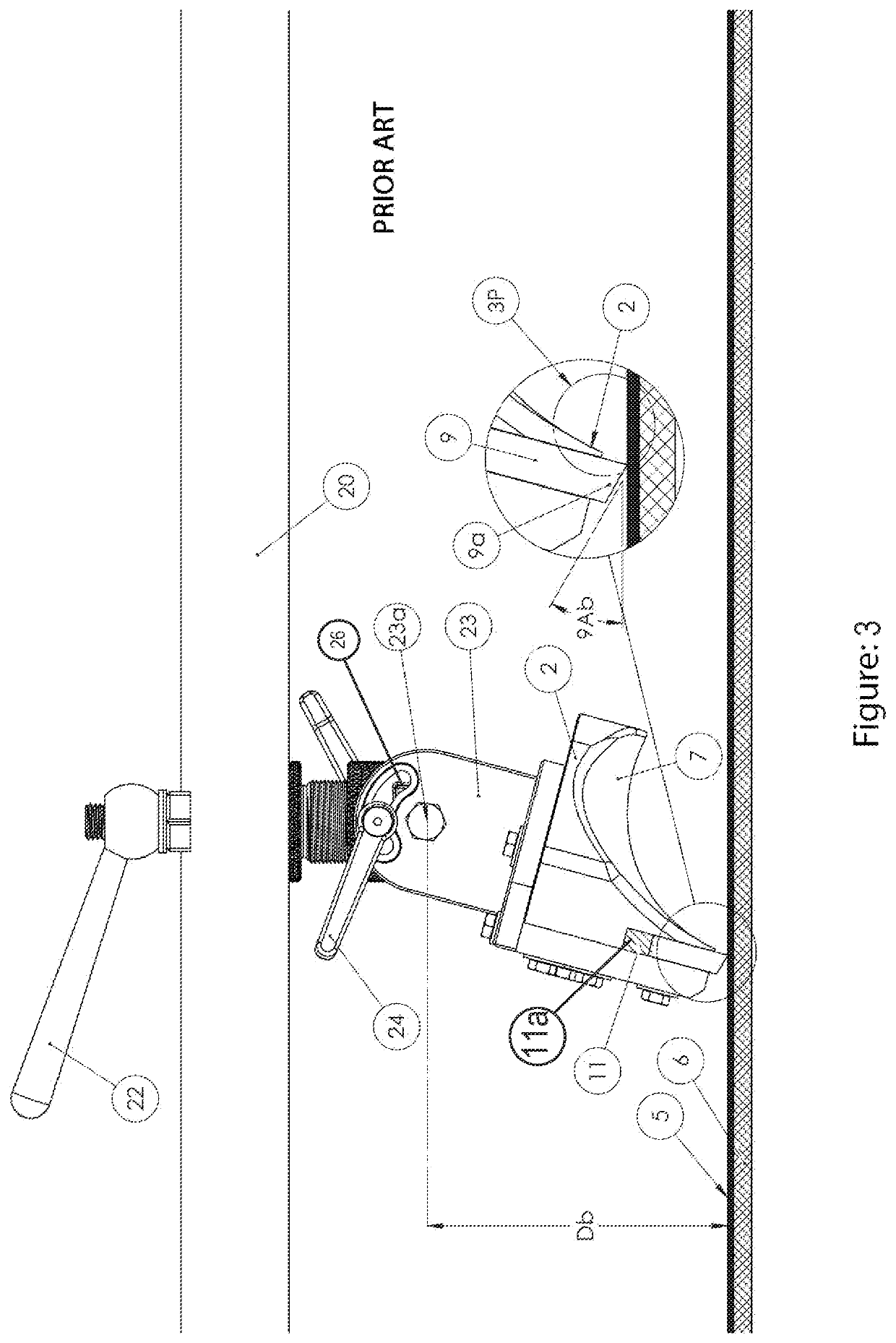As an example, when making pizza bases in commercial automated applications using a poorly rounded dough portion there is a
high probability that the final product will be misshaped and its appearance may drop below acceptable characteristics in dimensions and workability, as a miss-shaped dough portion may not easily stretch out to a round pizza base and therefore needs manual labor intervention to correct the shape and size thereby adding costs and loss of production.
There is also an issue with rounding blemishes that are prevalent on the dough portions created by some existing devices that can occur from the prior art devices conventional rounding such that when the dough portion is rounded it has a blemish on the surface of the rounded dough portion.
One typical type of blemish will have the appearance of a “
navel” on a
Navel Orange, this blemish will create issues when the dough ball is stretched and worked to create the flat pizza base.
When stretched this blemish will almost always leave a blemish in the surface of the pizza, in other cases it will cause or be the source of a tear in the pizza base.
These rounders have several issues that lead to less efficient rounding.
In this rounding procedure the dough portion often gets a blemish.
This area has the potential to create a blemish where open folds of dough are spun in a circular spiral going into the end of the dough portion similar in appearance to the end of a
Navel Orange.
In other words, if the contacting surface is very small then all of the heat generated is focused into this small area—easily causing overheat and failure in operation.
Problems also occur with the prior art when the camber is adjusted it can change the height or distance from the seal bar edge to the rounder bar support frame.
This adjustment can have issues such as but not limited to time required to make adjustments during change over when required due to changes in dough
portion size warrants.
When the rounder bar is rotated to be more open then the distance between the structure and the seal tip can increase and if an operator fails to make the necessary changes in height adjustment then the result could be that the
contact force on the rounder bar seal surface tip to the
conveyor belt will be too high and therefore possibly result in excessive force which translates to excessive friction such that the
conveyor belt and / or the rounder bar seal tip can be damaged due to overheating.
Not to mention that localized heating may also heat the dough and cause other types of failures and issues.
Though this is an improvement over the
solid elements used in other devices, it still has the issues noted with point loading, wear, and float or disconnect.
The angle of the scraper component still leads to
high surface loading pressures and does nothing to further stabilize the scraper or address forces exerted by the dough on the rounder bar seal.
Thus these existing inline rounder devices with single or multiple contour rounder bars generally have fixed, non-rotating seal elements which have the same drawbacks as the other prior art devices, namely static sealing elements requiring additional manual adjustment and loading forces and seal structures that can be detrimental to sealing and increase wear.
Existing rounder bars also tend to cause or create what is called a
triple point blemish which often occurs when the rounder bar seal makes a substantially perpendicular angle or going from a substantially perpendicular angle and towards an
acute angle relative to the conveyor belt whereby the dough is drawn into this area and thru the action of the moving conveyor belt becomes entrained and wedges into or between the seal bar to belt
mating surface.
This leakage between the belt and the seal is an undesirable effect and the principal way to reduce this effect is to apply a higher compressive force to the seal bar to reduce or try to remove this leakage effect, which then creates increased friction and associated issues as previously indicated.
If held perpendicular to the glass and to the direction of travel the edge has a point of contact with little graduation and the forces are blunted, moving much less effectively along the surface and moving with great difficulty.
To do this with the necessary
structural rigidity is difficult using a long-cantilevered section in plastic as it will tend to bend and deform in that bends direction or as coined in the
plastics industry it will
creep and plastically deform over time.
Damage can occur from improperly setting or resetting the rounder bar height manually.
In existing seals, if the height is improperly set such that there is too great a force on the seal or the rounder bar is rotated at such an angle or in such a setting so as to be pulled by the belt or folded or pinched by the belt, there is a potential that the operation of the belt and the contoured rounder bar in this position could damage by overheating or destroy such a seal.
The adjustment of the prior art often could not be done during operations, requiring time to stop and manually adjust the device.
 Login to View More
Login to View More  Login to View More
Login to View More 


